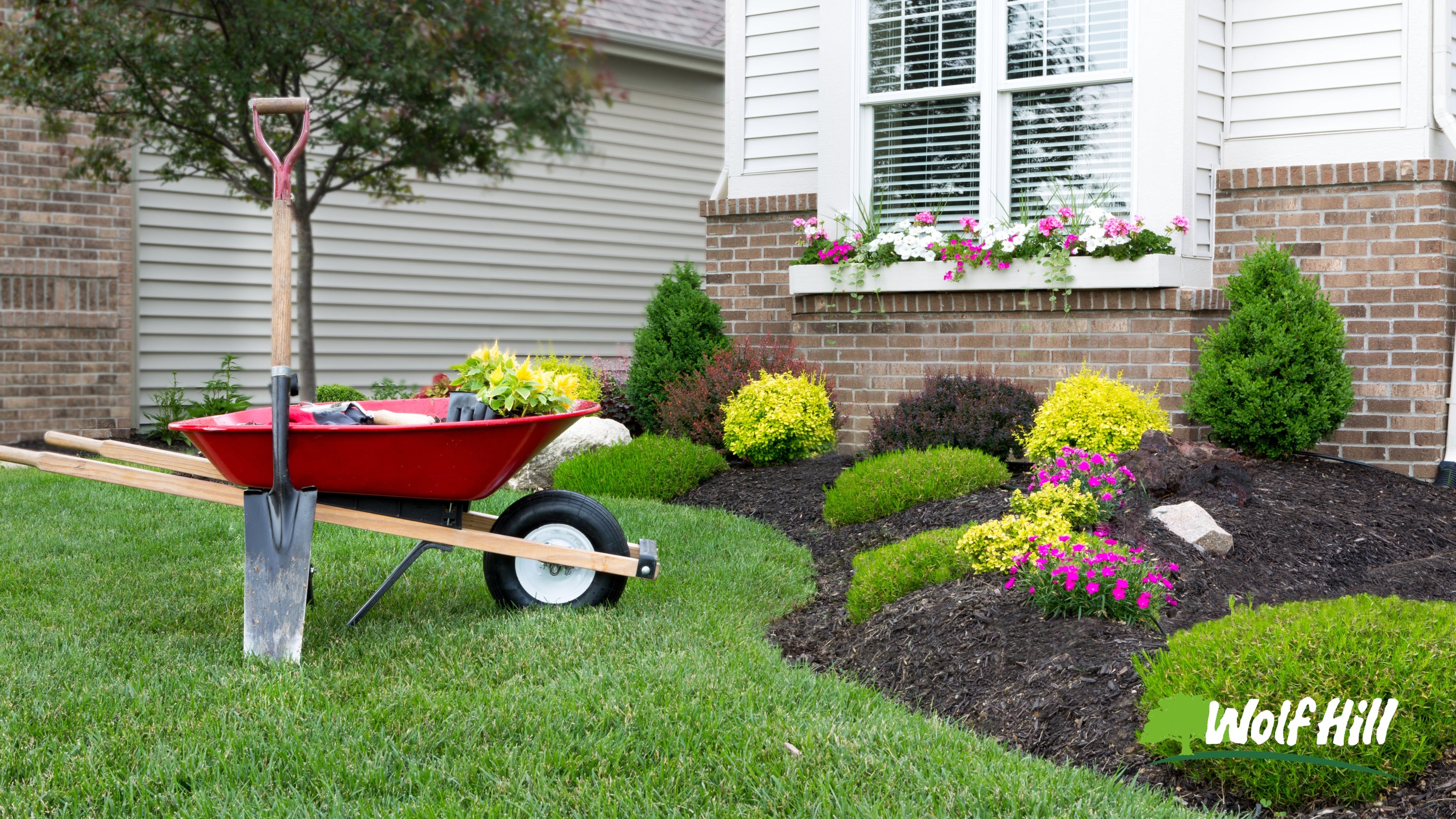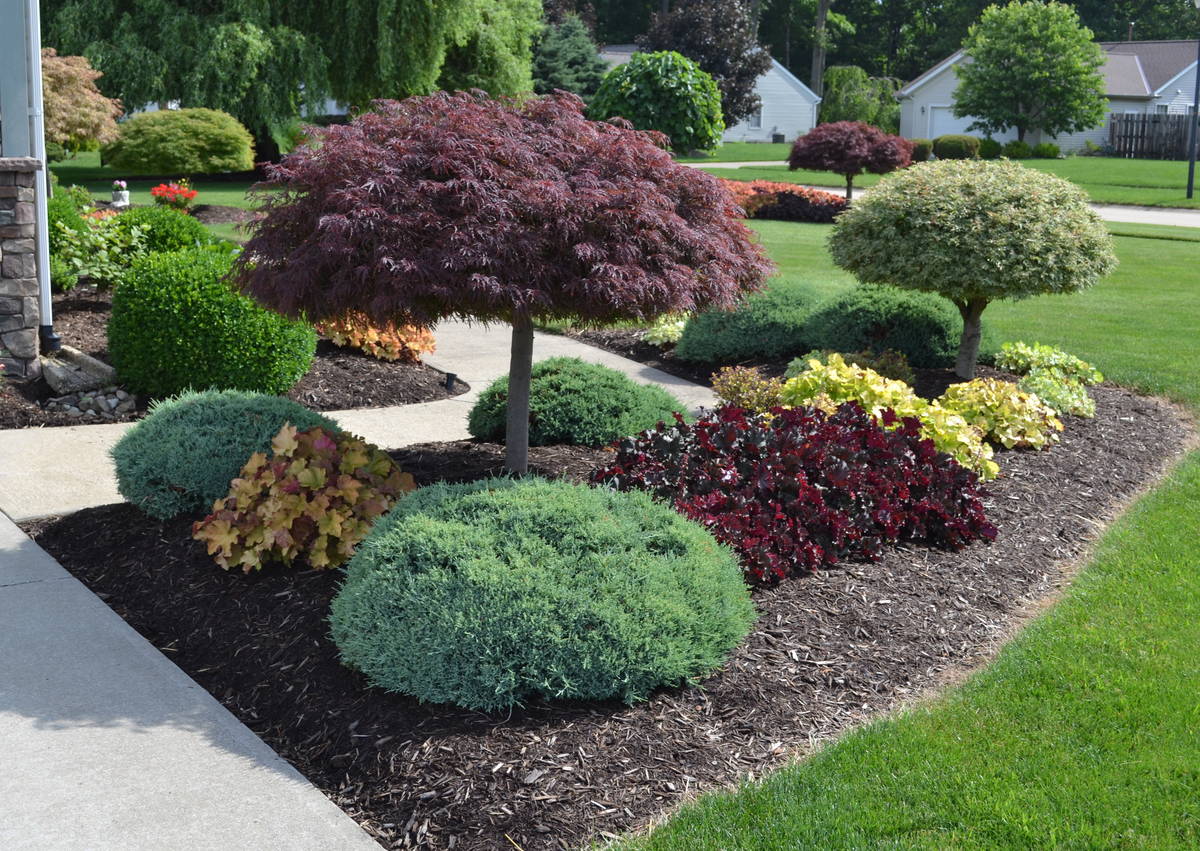Why Grill Islands Are the Top Choice Feature for Warm Weather Gatherings
Wiki Article
Discovering Different Kinds Of Landscaping to Boost Your Outdoor Atmosphere
Landscape design plays an important duty in defining outside spaces. Numerous styles, from standard yards to modern minimalist layouts, provide distinct advantages for boosting appearances and function. Integrating elements like xeriscaping and indigenous plants can contribute to ecological equilibrium. Understanding the interaction of hardscape and softscape is crucial for developing inviting settings. The choices available can be frustrating, prompting one to show on which design best aligns with their vision for an outdoor shelter.Traditional Garden Landscape Design

While lots of contemporary gardens embrace minimalism and indigenous plantings, traditional garden landscape design stays a cherished approach that stresses symmetry, framework, and ornamental functions. This design commonly integrates formal geometric formats, where flowerbeds, paths, and hedges are arranged with accuracy. Central focal points, such as fountains or sculptures, attract the eye and offer a feeling of harmony.Traditional landscaping frequently consists of a variety of plant kinds, showcasing seasonal flowers and evergreen components. Traditional hedges, perennials, and annuals produce vibrant shades and appearances throughout the year. Furthermore, pergolas, trellises, and arches include upright rate of interest and function as support for climbing plants, boosting the overall aesthetic.The use all-natural materials, such as stone and timber, further enhances the typical landscape, contributing to an ageless top quality. Ultimately, this design welcomes leisure and enjoyment, making it a cherished selection for those looking for an attractive outdoor environment.
Modern Minimalist Landscape Design
Modern minimalist landscaping stresses simpleness and functionality, defined by open spaces and clean lines. Secret qualities include a restricted plant scheme and thoughtful hardscape design that prioritizes usability and aesthetic allure. Reliable plant selection techniques additionally boost the minimal approach, developing tranquil outdoor atmospheres that urge leisure and reflection.Trick Characteristics of Minimalism
A growing pattern in landscaping is the accept of minimalism, identified by simpleness and performance. Minimal landscape design concentrates on clean lines, open spaces, and a limited color palette, promoting a feeling of peace. Elements are carefully curated to avoid mess, permitting each part to stick out. Making use of all-natural products, such as rock and wood, improves the organic feeling while preserving an aesthetic balance. Furthermore, minimalist designs often incorporate geometric forms, which can develop aesthetic interest without overwhelming the detects. Water functions might be included, functioning as focal points that enhance tranquility. On the whole, minimalism in landscaping highlights the charm of restraint, allowing nature's intrinsic top qualities to radiate through in a harmonious outdoor setting.Plant Selection Approaches
Reliable plant choice is vital for achieving the preferred aesthetic in modern-day minimalist landscaping. The focus must be on simplicity, making use of a minimal palette of plants that enhance each other and the surrounding atmosphere. Indigenous plants are commonly excellent, as they need much less maintenance and water, advertising sustainability. Picking types with differing elevations and textures can include aesthetic interest without overwhelming the space. Grouping plants in collections instead than scattering them improves communication and reinforces the minimalist style. Evergreen varieties can offer year-round structure, while seasonal blooms introduce subtle shade adjustments. Ultimately, the goal is to produce a serene outside room that personifies serenity and harmony via thoughtful plant choices.Hardscape Design Principles
Necessary elements in hardscape design considerably add to the total visual appeals and performance of minimalist landscape design. This design method highlights clean lines and downplayed materials, creating a clean aesthetic experience. Secret components include paths, outdoor patios, and keeping walls, which not only specify areas yet additionally boost access and functionality. Making use of materials such as concrete, stone, and timber is common, showing a natural yet modern visual. Integrating geometric shapes and symmetrical designs additionally strengthens the minimal ideology, enabling a harmonious mix with bordering greenery. Additionally, proper water drainage and disintegration control are vital considerations, guaranteeing longevity and sustainability. Inevitably, efficient hardscape style acts as a foundation that complements softscape aspects while keeping balance and simpleness in outdoor settings.
Cottage-Style Landscaping
Cottage-style landscape design provides a wonderful approach to producing welcoming exterior areas. By incorporating enchanting plant mixes, this style promotes a feeling of warmth and fancifulness. The emphasis on comfy, well-defined areas urges relaxation and satisfaction of nature.Charming Plant Mixes
Many house owners seek to develop a picturesque outside room, attaining the charm of cottage-style landscaping commonly hinges on thoughtful plant combinations. Lively flowers, lush foliage, and fragrant herbs can be artfully combined to stimulate a sense of whimsy and nostalgia. Integrating lavender, sissies, and foxgloves develops a vivid tapestry that attracts pollinators while providing a delightful fragrance. Integrating ornamental lawns like miscanthus can include appearance and activity, enhancing the softer blossoms. Additionally, mixing annual and perennial plants guarantees continuous color throughout the seasons. Using mountain climbers, such as clematis or honeysuckle, can boost upright interest. Overall, these mixes not just beautify the landscape yet additionally cultivate a charming and inviting environment.
Cozy Outside Spaces
Creating comfy outdoor areas calls for a careful blend of convenience and beauty, complementing the dynamic plant mixes located in cottage-style landscaping - Retaining Wall Installation. These areas often include welcoming seating arrangements, such as weathered wooden benches or supported chairs bordered by lavish plant. Soft lights, like fairy lights or lanterns, adds warmth, changing the space into a peaceful hideaway. Including components such as trellises embellished with climbing up roses or aromatic herbs enhances sensory experiences. Additionally, paths constructed from rustic stones invite expedition and link with nature. Ornamental touches like birdbaths or wayward yard art add to a feeling of whimsy. Eventually, the objective is to produce a charming ambience that encourages leisure and enjoyment of the charm bordering these comfy exterior sanctuariesXeriscaping for Water Preservation
Just how can areas stabilize aesthetic landscaping with journalism requirement for water conservation? Xeriscaping becomes a practical option, promoting sustainable techniques that reduce water usage while enhancing exterior elegance. This landscape design approach concentrates on using drought-resistant plants native to the region, which call for substantially less water than conventional gardens. By including compost and effective irrigation systems, xeriscaping reduces dissipation and overflow, further conserving precious water resources.Communities can develop visually appealing landscapes through mindful planning, picking a varied variety of textures and shades that prosper in arid problems. Furthermore, xeriscaping encourages using decorative rocks and ornamental crushed rock, providing functional and attractive choices to yard lawns. As communities accept this environment-friendly technique, they not only lower their water consumption however also advertise biodiversity and durability in their neighborhood ecological communities. Inevitably, xeriscaping functions as a demo of the harmony between visual appeal and environmental duty.Hardscape Layout Elements
Hardscape style components play a vital duty in enhancing outside areas by offering framework and capability. These non-plant features, such as patios, decks, walls, and pathways, produce aesthetic passion while offering sensible functions. Making use of materials like block, concrete, and stone, hardscaping adds to the overall aesthetic appeal and longevity of a landscape.Incorporating hardscape components can define areas within a yard, directing movement and motivating social communication. For circumstances, a well-placed pathway can link various sections of the garden, while keeping walls can handle elevation modifications and stop erosion.Furthermore, hardscape design can improve ease of access and safety and security, offering secure surface areas for walking or relaxing. Efficient combination of hardscape elements complements soft landscaping, making sure a balanced outdoor setting. Eventually, thoughtful hardscape layout improves not only the elegance of outside areas however also their use, making them extra welcoming and useful for site visitors and property owners alike.Outdoor Living Rooms
While outside home supply a seamless blend of convenience and nature, they serve as important expansions of a home, improving lifestyle and recreation. These locations can include outdoor patios, decks, or outside kitchens, created to foster leisure and enjoyment. Outdoor Lighting Installer. By integrating functional furnishings and stylish decoration, house owners produce welcoming atmospheres for events or silent evenings.The integration of color frameworks, such as awnings or pergolas, safeguards versus the components while maintaining an open feel. Fire pits and exterior heaters prolong usability right into cooler months, offering heat and setting. Furthermore, incorporating illumination attributes enhances the room's functionality after sundown, developing a BBQ Island Installation magical night atmosphere.Landscaping aspects, such as boundaries and paths, further specify these locations, guiding motion and adding visual appeal. Eventually, exterior home change backyards into flexible retreats, advertising a lifestyle that accepts both nature and comfortNative Plant Landscaping
Native plant landscape design stresses the use of indigenous plants to produce harmonious and sustainable exterior environments. This method not only enhances biodiversity but likewise conserves water and lowers the need for chemical plant foods and chemicals. By picking plants that are indigenous to a details region, property owners can ensure that their landscapes are well-adapted to regional soil and climate conditions, resulting in lower upkeep requirements.Additionally, indigenous plants provide important habitats for local wild animals, including bees, birds, and butterflies, promoting environmental health. Landscape designs that include these plants frequently feature naturalistic layouts that resemble regional ecological communities, cultivating a feeling of location and link to the environment.Furthermore, indigenous plant landscape design can contribute to soil security and erosion control, making it an environmentally responsible option. On the whole, this method not only improves outside spaces however also sustains the local ecological community, developing a lasting balance in between human activity and nature.
Often Asked Concerns
Exactly How Can I Select the Right Landscape Design Style for My Home?
Selecting the ideal landscaping style for a home includes reviewing the property's architecture, climate, and personal choices. Outdoor Lighting Installer. Researching various styles and speaking with experts can give guidance to develop an unified exterior area tailored to individual demandsWhat Is the Ordinary Price of Expert Landscaping Providers?
The ordinary price of expert landscaping services typically varies from $1,000 to $5,000, relying on job place, complexity, and dimension. Property owners should take into consideration obtaining multiple quotes to assure they receive reasonable prices and quality service.How Often Should I Maintain My Designed Lawn?
The frequency of preserving a designed backyard usually depends on the plants and attributes existing. Typically, regular maintenance every couple of weeks is recommended, with seasonal tasks raising in regularity during peak growing periods for excellent health and wellness and aesthetic appeals.Exist Landscaping Choices for Tiny Urban Spaces?

Different landscape design alternatives exist for small urban areas, consisting of upright yards, container plants, and roof gardens. Integrating these components can take full advantage of restricted locations while providing greenery, enhancing looks, and boosting air quality in urban atmospheres.
What Plants Are Best for Drawing In Neighborhood Wild Animals?
The very best plants for attracting local wild animals consist of indigenous blooming species, berry-producing bushes, and diverse lawns. These plants give necessary food and environment, promoting a prospering community that supports various birds, insects, and small creatures. Numerous property owners seek to produce a stunning outdoor space, achieving the charm of cottage-style landscape design usually pivots on thoughtful plant mixes. Developing cozy exterior rooms calls for a cautious mix of convenience and beauty, enhancing the lively plant combinations located in cottage-style landscape design. Native plant landscaping stresses the use of native flora to develop unified and sustainable exterior settings. Landscape creates that include these plants commonly feature naturalistic layouts that resemble local ecosystems, cultivating a sense of place and link to the environment.Furthermore, indigenous plant landscaping can add to soil security and disintegration control, making it an ecologically responsible option. Different landscaping options exist for tiny urban rooms, consisting of vertical yards, container plants, and rooftop gardens.Report this wiki page